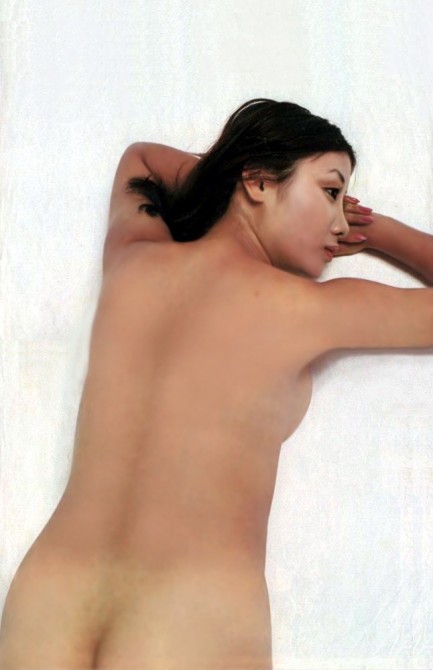 Yuriko gets fresh in her bestselling photo book. 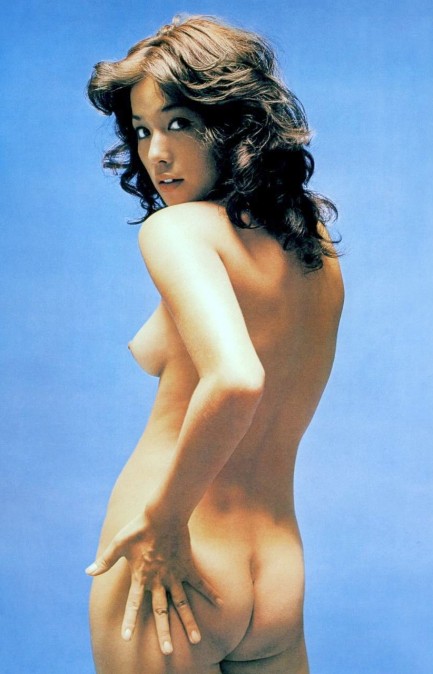
We could have gone several directions in posting a photo of Japanese actress Yuriko Hishimi, who appeared in such films as Kôshoku: Genroku (maruhi) monogatari, aka Diary of a Nymphomaniac, and Chikyû kogeki meirei: Gojira tai Gaigan, aka Godzilla vs. Gigan. We have shots of her in swimsuits, in flannels, in motorcycle leathers, in auto racing gear, in a nurse's outfit, and more. But underneath all those, there's this. Even then there are many choices because she has entire books of nudes. Well, one third of one book, and all of two others. One of her solo efforts, a big seller, was called Yuriko 1967-73, and this is one of the images from inside.
Japanese actresses posed nude often, which is why we have so many of the shots on our website. They were made, on average, fifty years ago. Today, in our current era, photos of nudes cause debate. Are they artful, or are they exploitation? If they differ from a nude Rodin or Modigliani, is it because of their realism? Is it because of their easy replicability? Or their existence outside a museum setting? Then what of a shocking museum Mapplethorpe or Schiele with the subject's exposed genitals? Perhaps nudes are exploitative only when distributed for profit. But if profit condemns a nude, then what of the profits of galleries and museums? Are nudes exploitative because of their tendency to arouse? Then what of Rodin's famed “Le Baiser”? Since our species owes its very existence to the drive for sex, if nudes arouse, isn't that a celebration of our ultimate purpose on this planet?
These are questions that interest us, which we attempt to ask with each nude image. Opinions differ, but for our part we don't believe there's anything inherently exploitative about the nude form, though clearly the production of such images can lead to that. But we don't live in an all-things-are-equal world, which is to say, for some it's easier to categorize and condemn all of something than try to understand which things might actually be in one category and which might be in another. We believe some nudes are exploitative (such as revenge porn), but not all. The photo above is a Rodin with a knowing look. It's erotic, playful, and a little shy. It's pure art. Which is why we have a similar bonus shot below, and more from Hishimi here. 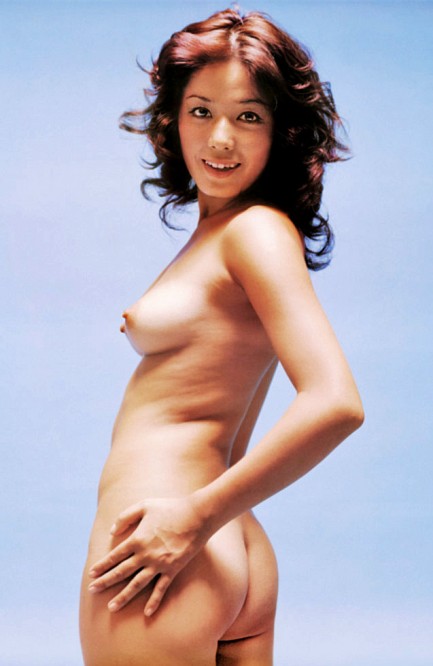
 Motorcycle? I don’t own one. The helmet is for protection when I crash the Pulp guys’ picnic over there. 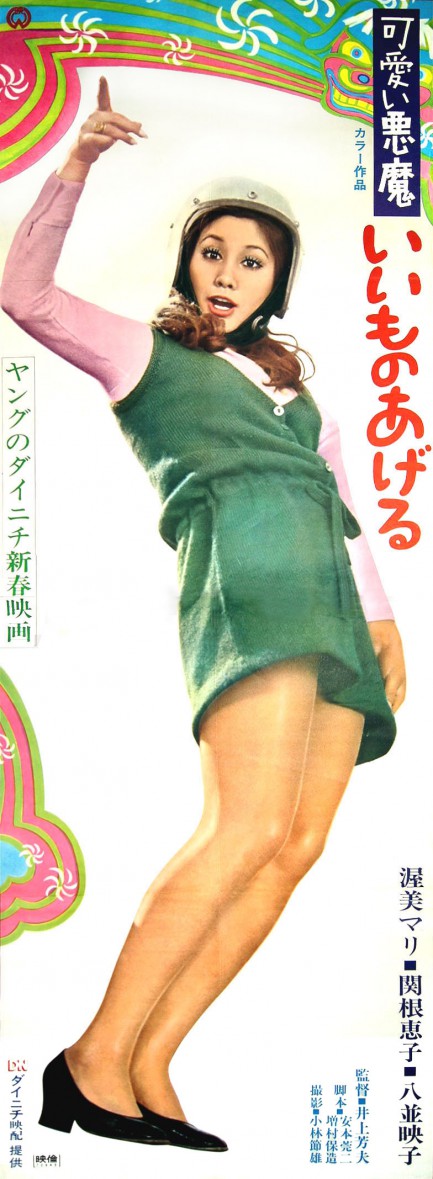
Only a little time today, but we love sharing this Japanese material, so above you see an alternate poster in panel length for Yoshio Inoue’s pinku film Kawaii Akuma: Iimono ageru, aka Just for You, which premiered today in 1970 starring Mari Atsumi. It’s completely different from the standard sized version, which we showed you here, and better too, we think. Now we are off—our holiday involves lobster, crab, and other oceanic yummies eaten picnic style in a hilltop park. Hope your day is excellent.
 Topless in Tokyo. 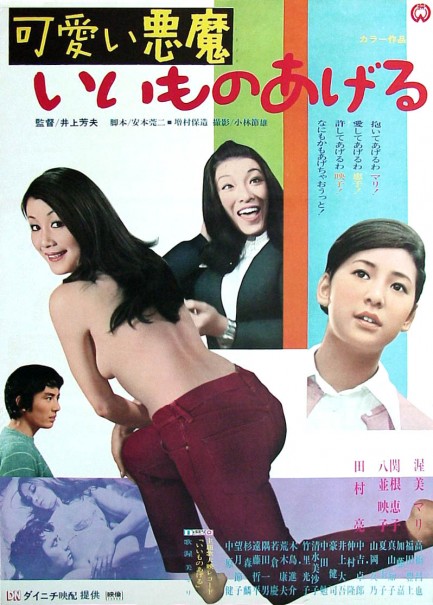
Above, a poster for Yoshio Inoue’s Kawaii Akuma: Iimono ageru, aka Just for You, starring Mari Atsumi and Keiko Takahashi. Atsumi became a major star in Japanese cinema, appearing mainly in Daiei Film Co. productions, and later transitioning into television and pop music. We have more Atsumi here and here, and we'll feature her again later. Kawaii Akuma: Iimono ageru premiered in Japan today in 1970.
|
 |

The headlines that mattered yesteryear.
1923—Yankee Stadium Opens
In New York City, Yankee Stadium, home of Major League Baseball's New York Yankees, opens with the Yankees beating their eternal rivals the Boston Red Sox 4 to 1. The stadium, which is nicknamed The House that Ruth Built, sees the Yankees become the most successful franchise in baseball history. It is eventually replaced by a new Yankee Stadium and closes in September 2008. 1961—Bay of Pigs Invasion Is Launched
A group of CIA financed and trained Cuban refugees lands at the Bay of Pigs in southern Cuba with the aim of ousting Fidel Castro. However, the invasion fails badly and the result is embarrassment for U.S. president John F. Kennedy and a major boost in popularity for Fidel Castro, and also has the effect of pushing him toward the Soviet Union for protection. 1943—First LSD Trip Takes Place
Swiss scientist Albert Hofmann, while working at Sandoz Laboratories in Basel, accidentally absorbs lysergic acid diethylamide, better known as LSD, and thus discovers its psychedelic properties. He had first synthesized the substance five years earlier but hadn't been aware of its effects. He goes on to write scores of articles and books about his creation.
|

|
|

It's easy. We have an uploader that makes it a snap. Use it to submit your art, text, header, and subhead. Your post can be funny, serious, or anything in between, as long as it's vintage pulp. You'll get a byline and experience the fleeting pride of free authorship. We'll edit your post for typos, but the rest is up to you. Click here to give us your best shot.

|
|







